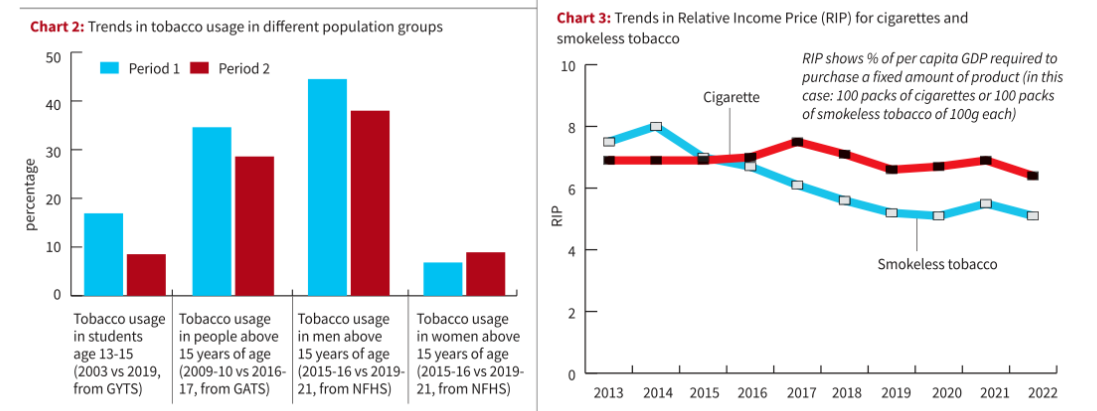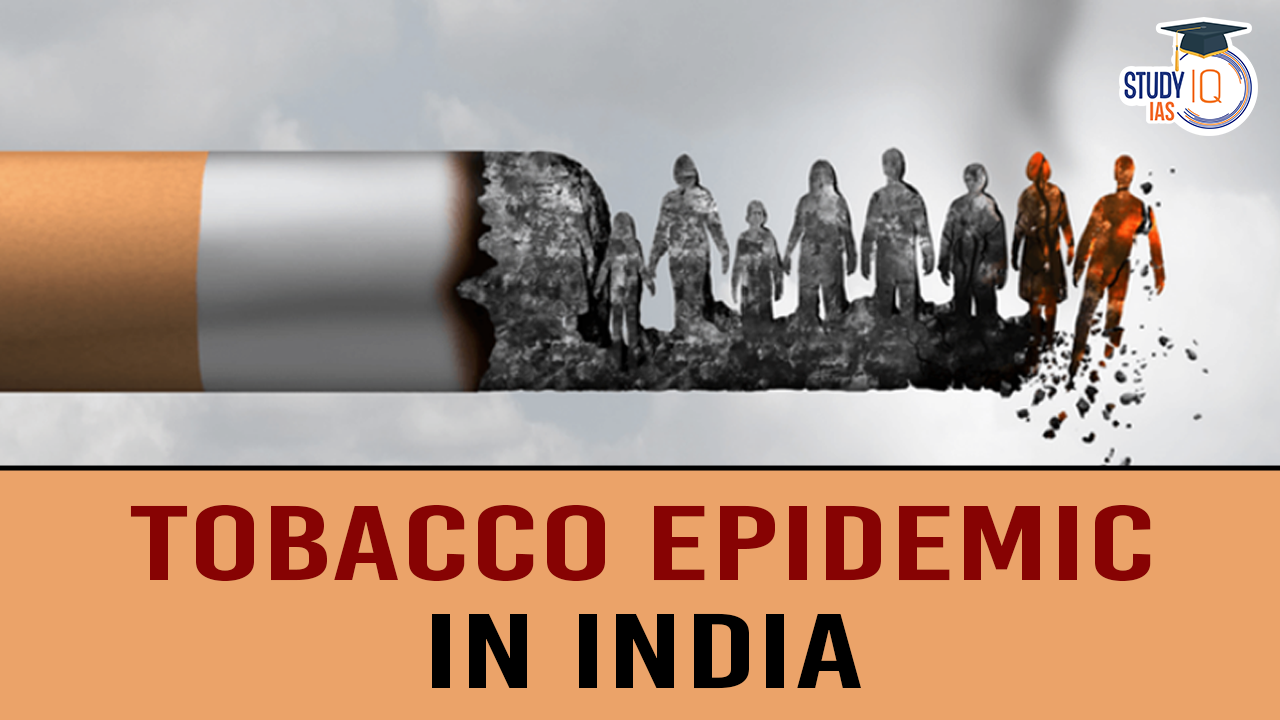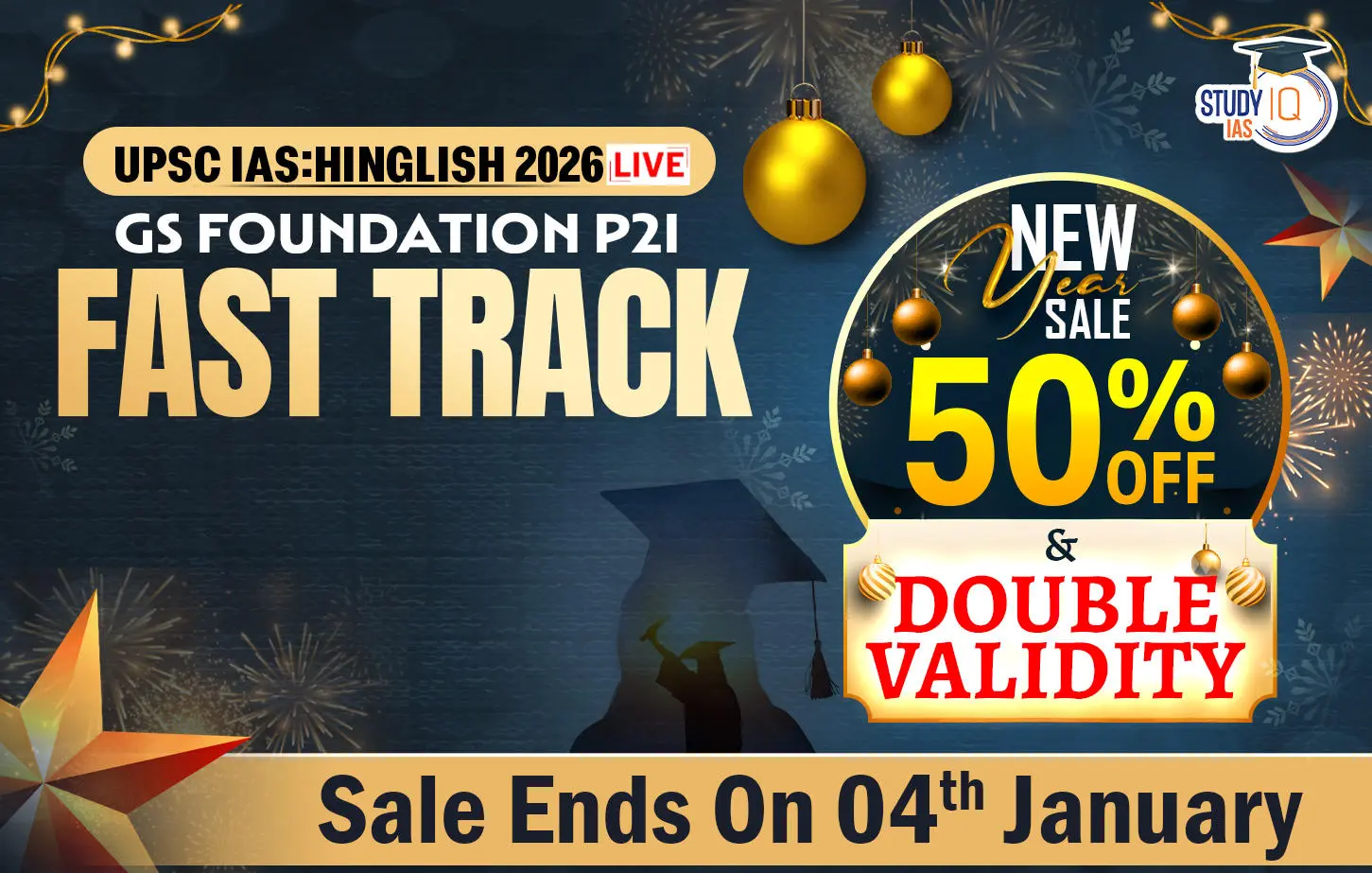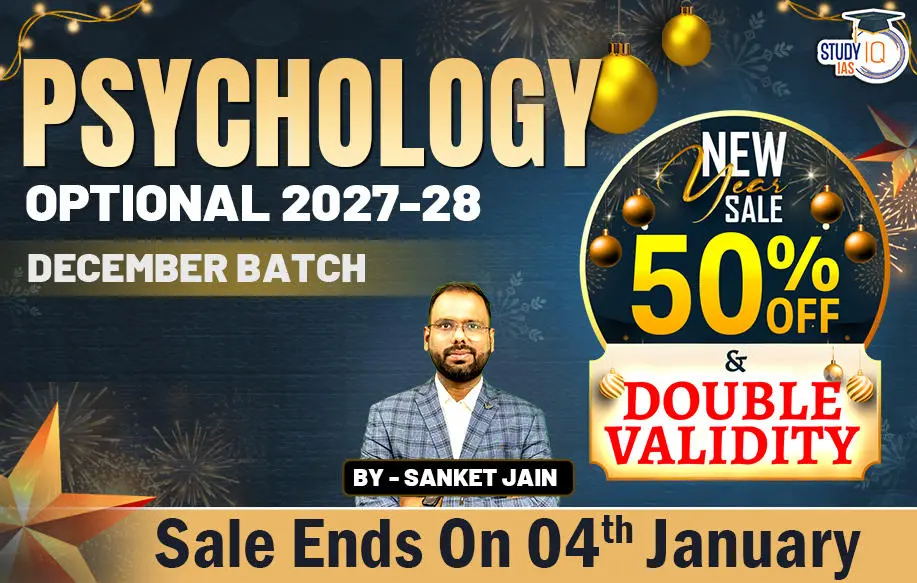Table of Contents
Context: Tobacco is the leading preventable cause of disease and death globally, affecting both consumers and cultivators. India’s tobacco exports likely cross ₹13,000 crore this year.
About Tobacco
- Tobacco cultivation in India was introduced by the Portuguese in 1605.
- It is one of the important commercial crops cultivated in India.
- Tobacco types cultivated in India: Flue-cured Virginia (FCV), Burley, Bidi, Chewing, Natu, Oriental, HDBRG, Lanka, Hookah, Motihari and Jati tobaccos etc.
- Ideal conditions for growth:
- Frost-Free Climate: Tobacco requires about 100 to 120 days of frost-free climate to mature.
- Temperature: An average temperature of around 80°F (27°C)
- Soil: Tobacco is grown in warm climates with rich, well-drained soil.
- India is the only country which produces tobacco in 2 seasons.
- Highest Production in India: (1) Gujarat (41%) (2) Andhra Pradesh (22%) (3) Uttar Pradesh
- Highest Production Worldwide: (1) China (2) India (3) Brazil
Tobacco’s Impact in India
- India has the world’s second-highest number of tobacco users (26 crore), and the health of 60 lakh tobacco industry workers is at risk.
- Environmental Degradation: Tobacco farming depletes soil, contributes to deforestation (5.4 kg wood per 1 kg tobacco), and generates 1.7 lakh tonnes of waste annually in India.
- Economic Burden: Tobacco-related health costs exceed ₹1.7 lakh crore in India, dwarfing the ₹48,000 crore health budget in 2017-2018.
- Cleaning tobacco waste costs ₹6,367 crore annually, excluding soil and deforestation costs.
Check here all about World No Tobacco Day.
Status of Tobacco Use in India
- Surveys such as the Global Adult Tobacco Survey (GATS), Global Youth Tobacco Survey (GYTS), and India’s National Family Health Survey (NFHS) show a decline in tobacco usage among the surveyed demographics, except for a slight increase among women from 2015-2016 to 2019-2021.
- No surveys have been conducted post-COVID-19, which leaves a gap in current data.

Tobacco Board of India
- It was established in 1976 as a statutory body under Section (4) of the Tobacco Board Act, 1975. (HQ – Guntur, Andhra Pradesh)
- Nodal Ministry: Union Ministry of Commerce and Industry
- Functions:
- To promote the export of tobacco and its related products.
- To ensure that tobacco growers receive fair and remunerative prices for their produce.
Awareness and Control Programs
- Legal Framework: India has been a signatory of WHO’s Framework Convention on Tobacco Control (FCTC) since 2005 and has the Cigarettes and Other Tobacco Products Act (COTPA) 2003 governing tobacco sales.
- National Tobacco Control Program (NTCP): Launched in 2007 to implement COTPA and FCTC, raise awareness, and aid quitting efforts.
- Taxation: Tobacco is taxed, but implementation is weak, with non-compliance of smokeless tobacco products (SLTs) with COTPA guidelines, poorly regulated smuggled products, and outdated fines.
- Surrogate Advertising: While direct ads are banned, indirect ads (surrogate advertising) persist, promoting tobacco brands through proxy products.
Affordability and Implementation Challenges
- Failed Amendments: Proposed COTPA amendments in 2015 and 2020, addressing surrogate ads and licensing, were not passed.
- NTCP Ineffectiveness: A 2018 study found no significant difference in bidi or cigarette consumption reduction between NTCP and non-NTCP districts due to insufficient staffing, resources, and monitoring.
- Tax Evasion: Tobacco taxes remain low due to evasion, smuggling, illicit manufacturing, and counterfeiting. Transition to GST further increased affordability.
- Lobbying Power: The tobacco lobby influences policy, with exemptions for bidis and smaller manufacturers, government officials engaging with the industry, and the central government holding a stake in ITC Ltd.
Additional Challenges and Opportunities
- E-Cigarettes: Banned by the Prohibition of Electronic Cigarette Act (PECA) 2019, yet remain a challenge with 23% reported use and 8% daily use in an online survey.
- Farmer Support: Government support for tobacco farmers to switch to alternate crops like jowar, which can be more profitable, is crucial.
- Data Needs: Up-to-date data on tobacco use trends is needed to counter the industry’s evolving strategies.
Way Forward
- Strengthen Implementation: Stringent implementation of COTPA, PECA, and NTCP.
- Increase Taxation: Align taxes with FCTC recommendations, inflation, and GDP growth.
- Support Farmers: Aid tobacco farmers in transitioning to alternate crops.
- Gather Data: Collect up-to-date data to track tobacco use trends.
| UPSC PYQ |
With reference to the “Tea Board” in India, consider the following statements: (2022)
Which of the statements given above are correct? (2022)
Answer: D |


 National Technology Readiness Assessment...
National Technology Readiness Assessment...
 Justice Mission-2025: China’s Live-Fir...
Justice Mission-2025: China’s Live-Fir...
 Suryastra: First Made-in-India Long-Rang...
Suryastra: First Made-in-India Long-Rang...

























